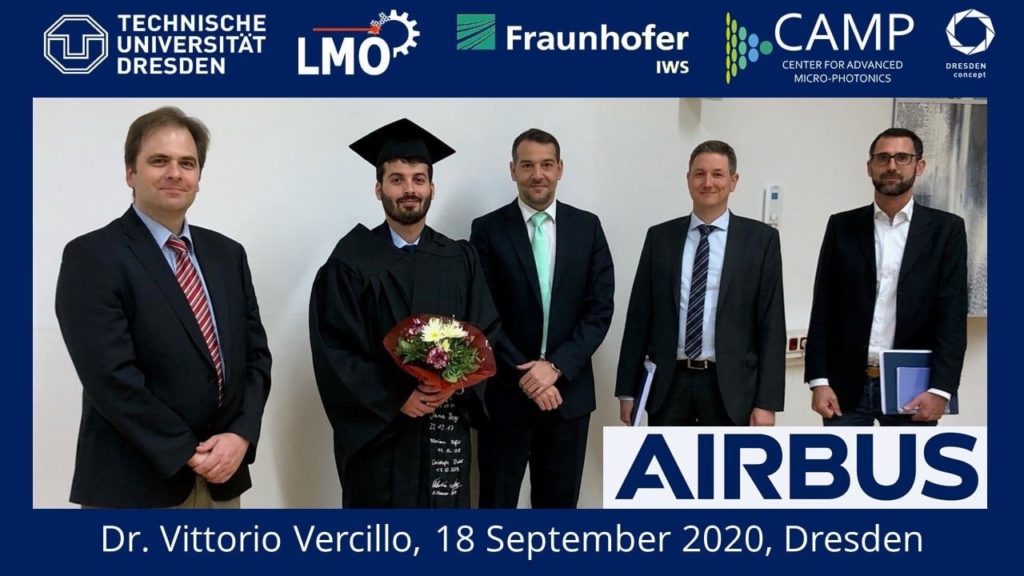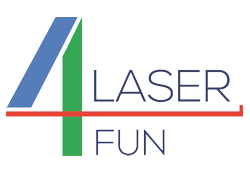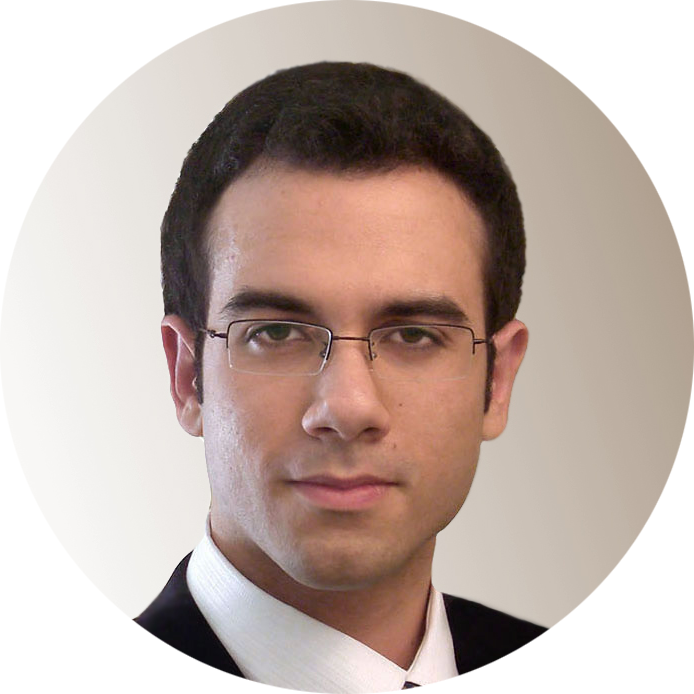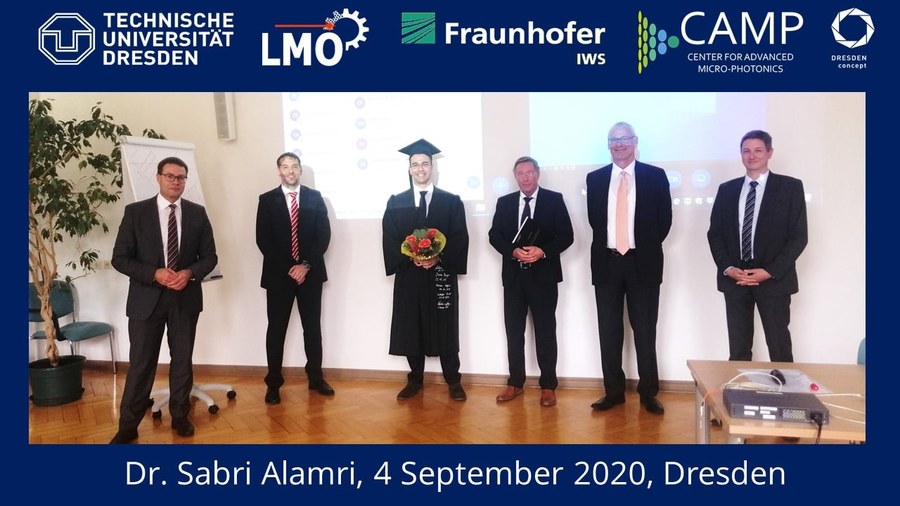
On September 18th, 2020, Vittorio Vercillo successfully defended his PhD thesis, titled “Durable laser patterned metal surfaces with enhanced icephobic properties for aerospace applications” and was awarded the degree of Doctor.
The work was carried out at Airbus Central Research & Technology, as well as at the Technical University Dresden, both in Germany, under the supervision of Dr. Elmar Bonaccurso and Prof. Dr. Andrés Lasagni. The now Dr.-Ing. Vercillo, was an Early Stage Researcher (ESR) of the Laser4Fun project. The public defense ceremony took place with “closed doors” at the Institute of Manufacturing Science and Engineering (IF) of TU Dresden (Germany), with the audience following the event through a video stream.
We congratulate Vittorio with this achievement!

Summary PhD thesis
Ice accreting on external aircraft surfaces due to the impact of supercooled water droplets can negatively affect the aerodynamic performance and reduce the operational capability. Therefore, it must be prevented. Icephobic surfaces capable of reducing the adhesion strength of ice to a surface and to reduce or delay the ice accretion represent a promising technology to support thermal or mechanical ice protection systems. Icephobicity is similar to hydrophobicity in several aspects, and therefore superhydrophobic surfaces embody a straightforward solution to the icing problem. Short/ultra-short pulsed laser treatments have been proposed as a viable technology to generate superhydrophobic properties on metallic surfaces. However, it has not yet been verified if such surfaces are generally icephobic in representative icing conditions encountered by aircraft, or if they need to have additional properties to effectively tackle icing. The research investigates the icephobic properties of laser-treated surfaces of alloys commonly used for aerospace components. Aluminium Alloy AA2024 and Titanium alloy Ti6Al4V surfaces were textured with Direct Laser Writing (DLW), Direct Laser Interference Patterning (DLIP) and Laser-Induced Periodic Surface Structures (LIPSS), using pulse durations from the femtosecond to the nanosecond regime. Altogether, the research advances the knowledge in surface micro-nanostructuring for aerospace applications, addressing the characteristics and limitations of several laser technologies in order to choose the most convenient manufacturing approach.


